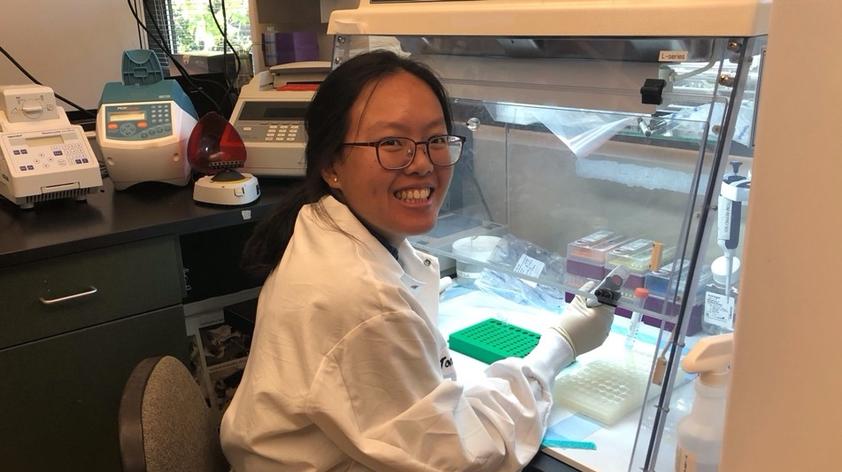
A prime(r) experience
I started my journey in the life science field as a biochemistry and cell biology undergraduate at University of California San Diego (UCSD). After graduating I worked at a small biotech startup, where I discovered that there are other career options, aside from academia and medicine, related to my major. This one-year work experience convinced me to pursue a career as a biotech researcher, and eventually led me to enroll in the California State University San Marcos as a Professional Science Masters in Biotechnology (MBt) graduate student.
In order to graduate, all students in the Professional Science Master’s program are required to take on a Semester-In-Residence (SIR) Project. Through the SIR Project, we have to find solutions to a real-life problem drawing on what we have learned in our science and business classes. During the different internship interviews I was offered a chance to do my SIR project with Dr. Tom Jensen and Patricia Byrne in the Reproductive Sciences lab at the San Diego Zoo Institute for Conservation Research (ICR).
It was certainly different from what I had in mind, but I could not miss out on such an opportunity. Besides, the laboratory uses molecular techniques, so I would learn methods relevant to biotech, and get to work on a project which could help save endangered species.
So, of course I chose to go to San Diego Zoo Global's Institute of Conservation Research (ICR). As it turns out this was a great choice as I have had some amazing opportunities, including going to observe procedures such as fertility assessments of rhinos.
In early November, I attended the Avian Incubation Workshop. Part of the workshop experience was behind-the-scenes tours of both bird and mammal enclosures and programs at both the San Diego Zoo and the Safari Park. That will remain a wonderful vivid memory that will inspire me always.
The goal of my project at the ICR is to find an efficient way to estimate the length of telomeres in birds. Telomeres are the protective endcaps of chromosomes, which decrease in length with age and (increased) stress in birds. Being able to determine telomere length of birds can help in assessing and monitoring the overall health and may even be a good way to estimate life expectancy of birds within zoo populations.
Throughout my project, I had to learn various molecular biology techniques such as DNA extraction and amplification (qPCR) using highly modified primers. Primers are genetic bookmarks that encompass the target region of the DNA or gene to be amplified.
For this technique to be useful in management of birds, I had to make sure the primers were usable on a wide selection of birds. This is not easy to accomplish, but with help and guidance from Tom and Patricia I have successfully tested several primers and PCR conditions.
My SIR experiences at ICR has honed my molecular biology skills and helped me develop better laboratory practices. I also have a much better idea of what it takes to be a researcher, and I definitely learned about troubleshooting! Tom and Patricia both told me that this is probably my most important lesson and will make me a better researcher.
I know that the skills I gained at ICR will be very useful and applicable for my future career as a biotech researcher. But the opportunity to be part of ICR and to experience some of the rarest animals in the world up close was a personal honor for me. It reminded me once again that my project will help the survival of these animals.
My time at ICR has enriched my internship experience in ways that I never had thought possible.
Tania Tejakusuma is a Professional Science Masters graduate student from California State University San Marcos.













